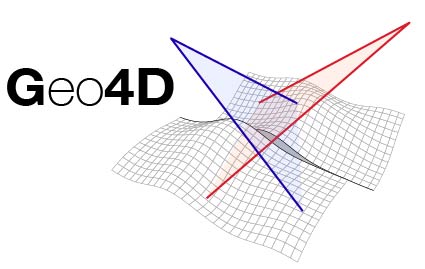2. Main workflow for KFTS-InSAR¶
2.1. Configuration file¶
Configuration parameters for KFTS are defined in a text file that will be read using the configparser module of python. Below is a reference configuration file.
########################################
###### Config file for KFTS-InSAR ######
########################################
[INPUT]
# Reference directory from which other paths are defined
workdir = /share/user/Yourfolder/
# File containing interferograms
infile = Stack/PROC-STACK.h5
# Format of infile (ISCE,RAW or Mintpy)
# Only used to adjust the name of the interferograms key in "infile"
fmtfile = ISCE
# File containing previously computed TS (used only if UPDT is True)
instate = States.h5
# File containing information about earthquake (used only if EQ is True)
# X Y (in pxl number) time (in decimal year since start) radius_of_influence (in km) dx dy
eqinfo = EQ_list.txt
#####################################
[OUTPUT]
# Directory for output h5 file (States.h5 and Phases.h5)
# The absolute path will be: workdir+outdsir
outdir = KF/
# Directory for saving figures (used only if PLOT is True)
# The absolute path will be: workdir+figdir
figdir = Figs/
#####################################
[MODEL SETUP]
# Is there earthquake to model? (if True, eqinfo required)
EQ = True
# Frequency of oscillating signal (rad/year)
freq = 6.283185
# Std of unmodeled phase delay
# (same unit as unwrapped interferograms (often mm))
sig_y = 10.0
# Std of interferometric network misclosure
# (same unit as unwrapped interferograms)
sig_i = 0.01
# Functional element of descriptiv model
# see https://manondls.github.io/KFTS-InSAR/func.html
model = [('POLY',1),('SIN',${freq}),('COS',${freq})]
# A priori std estimate of model parameters (mm)
sig_a = 25.,8.,8.,8.
# Time delta after which temporally focused functions are not optimized anymore
# for steps in time (earthquakes) and constant terms (polynomial of order zero)
Dtime_max = 3.0
#####################################
[KALMAN FILTER SETUP]
# Print details?
VERBOSE = False
# Create and save plots?
PLOT = False
# Start from previously computed state (in instate)?
UPDT = False
# Minimum number of valid acquisition on a pixel
pxlTh = 1
#####################################
Note
see section 3 for details about model syntax.
2.2. Routine workflow¶
kfts.py is the main file of KFTS-InSAR. It reads the configuration file (.ini) and run the full KFTS-InSAR processing chain. Separate components are detailed in subsequent sections. A typical command to run the algorithm is
python -u kfts.py -c myconfigfile.ini
To speed up the computation, we recommend to run the code in parallel with openMPI (pixel will be divided between processors). This requires a build of H5py and numpy modules of python with openMPI. For instance, using 30 processors :
mpirun -n 30 python -u kfts.py -c myconfigfile.ini
- class kfts.RunKalmanFilter(config)[source]¶
Class to run the full KFTS-InSAR processing chain Read configuration and data. Setup parameters. Run KF for each pixel.
- earthquakeIntegration(data)[source]¶
Add step function to the functional model of deformation to model coseismic displacement due to earthquakes. Require a file containing earthquake properties in the track reference frame (see earthquake2step.py).
- initCovariances(L)[source]¶
Create arrays for the initial state Covariance matrix (P0) and the process noise covariance (Q).
- L:
Initial length of the state vector (number of model parameter + 1 (for reference phase))
- initPlot(data, figdir)[source]¶
Draw quick plots to visualize input data: * Data plot * baseline plot * spatial mask on pixel
- launch()[source]¶
Combine procedures to prepare data and model, then launch the Kalman filter class on each pixel row by row
- loadcheck_pastoutputs(data, tfct)[source]¶
- Check input file consitency when restarting and frame time series update
data : initiated data class (new interferograms)
tfct : initiated model class
2.3. Outputs¶
There are 3 output HDF5 files containing the following datasets. For N interferograms with (Y, X) pixels over M timesteps, we have
* the time series of phase change with respect to the first acquisition in Phases.h5:
dates Dataset {M} Ordinal values of the SAR acquisition dates
idx0 Dataset {SCALAR} Index of first phase in file with respect to first reference date of time series
rawts Dataset {Y, X, M} Reconstructed phases
rawts_std Dataset {Y, X, M} Reconstructed phases standard deviation (sqrt of diag(state_cov))
tims Dataset {M} Decimal years of the SAR acquisition dates
the state information at the last time step
States.h5. This contains the L optimized parameters, as well as the m last phase observations (indices M, M-1, M-2, …, M-m+1), usefull to restart KFTS for later updates and associated covariances:indx Dataset {m} Indexes (with respect to first acquisition) of the phases kept in the state misclosure Dataset {SCALAR} Misclosure error included in data covariance (sig_i) mismodeling Dataset {SCALAR} Mismodeling error added as process noise on last phase estimate (sig_y) processnoise Dataset {L} Process noise for functional model parameters (default is ok) state Dataset {Y, X, L+m} State vectors for each pixel state_cov Dataset {Y, X, L+m, L+m} Covariances of state for each pixel tims Dataset {m} Times corresponding to phases in state in decimal years with respect to first phase
metadata useful to evaluate the quality of the dataset, estimates and chosen parameters
Updates.h5:mean_innov Dataset {Y, X, M} Mean innovation (or residual) for the last phase estimate at each time step param_gain Dataset {Y, X, M, L} Norm of the gain for the L model parameters at each time step
